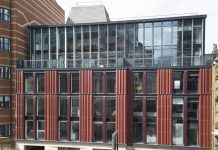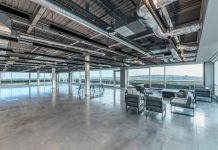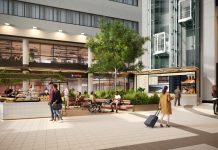New research from leading property consultants CBRE, commissioned by the Business Centre Association (BCA), has shown that business centres in the North West – which include serviced offices, managed workspaces, light industrial space and co-working – are continuing to expand.
The findings, published in The UK Business Centre Market report, show that the North West now has the most amount of business floorspace of any region outside of London, demonstrating how competitive the market has become.
This competition is reflected in the cost of space, with the North West among the cheapest in the country. The price for three desks in a serviced office averaged £3,701 in the region, compared with a UK average of £9,848 a year.
However, the report cautioned that the amount of space occupied by firms has fallen from 650 sq ft in 2014 to 319 sq ft. In part, this is due to trends such as remote working and flexible work practices, which drive down demand for office space.
CBRE, which surveyed 580 business centres across the country, analysed trends across the sector including its characteristics and customers. Following continued growth, the sector is now estimated to support 93,000 individual small businesses employing 480,000 people and representing around £18bn of GDP, despite political and economic uncertainty within the business community. Turnover in the sector, across the UK, was worth around £3.3bn, up from £2bn in 2013.
Speaking on the impact of the EU referendum on the sector, the Chair of the BCA and Director of Sales at Bruntwood, Andrew Butterworth, said:
“After the referendum, almost immediately enquiry levels and demand levels fell…but they have come back and are now tracking long term averages. Business confidence started to return and people decided they needed to crack on with running their businesses. As recent investment and acquisitions attest, the prospects for the future of the sector are extremely positive.”
Whilst the rest of the economy continues to prepare for Brexit, the flexibility, simplicity and community of business centres has made the sector resilient to the Brexit effect with an initial slow down soon subsiding and around 20% of operators seeing growth after the referendum.
Over 90 new centres opened in 2015 and 2016, providing a home for thousands of the UK’s new and growing companies. The evidence suggests that this trend will continue regardless of Brexit as more people take advantage of the terms, services and leading technology provided by business centres.
The continuing success of the sector within the commercial market is also evidenced by the growth in competition over the two years, as high demand from customers drives innovation, and creates clearer and more distinctive customer offers and facilities.
Whilst traditionally seen as a stepping stone on the way to long-term leases, the evidence suggests that business centres are now being considered as a long-term option with 39% of businesses staying in centres for at least three years, an almost three-fold increase on 2014.
Commenting on the findings presented within the report, the Executive Director of the BCA, Jennifer Brooke, said:
“Our sector continues to push to the front of the commercial sector, with operators able to respond to customers and technology in a way which the traditional office market cannot. Whilst 2016 was a year of some uncertainty for many in our sector, this survey shows that the sector continued to grow and thrive amidst the instability created by political events. And, of course, Brexit has not and could not have stopped the pace of technological innovation or stemmed the ever-increasing aspirations of customers for higher quality space and more responsive service from our members. The sector looks set to respond positively to what is likely to be a challenging few years to come.”
Author of the report, Miles Gibson of CBRE commented:
“Our annual survey of flexible space providers confirms that the workplace is now changing very rapidly. Business centres are turning the very idea of the office upside down, and their model is proving very attractive, with growth in customers averaging 28% each year between 2013 and 2016. The customer expectations created by flexible space providers present both challenges and opportunities for landlords more used to dealing with long term leases and conventional fit-outs.”






















